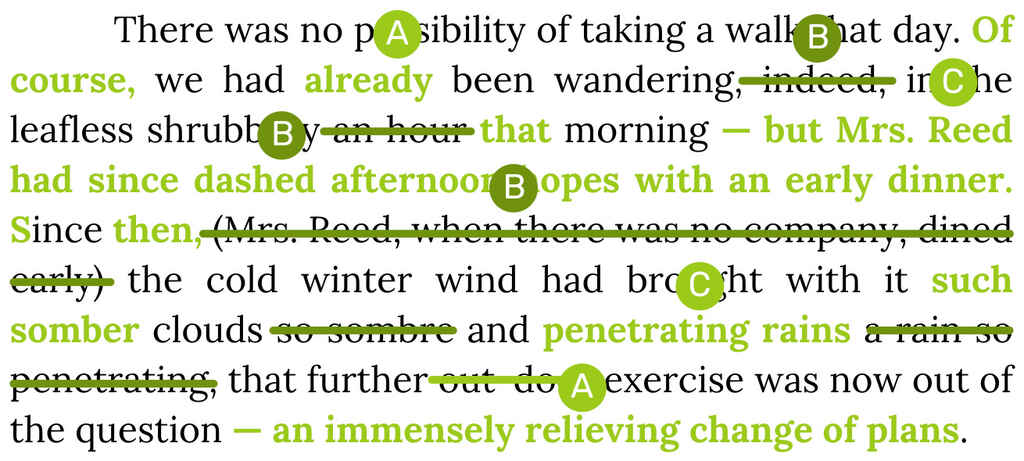Have you ever wondered what type of editing goes into making a book? From developmental editing to copy editing, there are many different types of book editing. This blog will explore the 3 most common types of book editing – Copy editing, Structural editing, and Line editing. We will then look at the role of each type of book editing in creating a successful book.
You might be interested in the guide to where to find book editing services
1. Copy Editing:

Copy editing ensures your manuscript is formatted correctly and error-free. It also looks for alignment, word choice, grammar, syntax, etc.
Copy editing is an essential step in the book publishing process. It ensures that your manuscript is properly formatted and free of errors Also read the guide to book formatting. It also looks for alignment, word choice, grammar, syntax, etc. Copy editing is thoroughly examining a manuscript before it is printed and published.
Copy editing can help identify grammar, punctuation, spelling, and syntax errors. It ensures that the manuscript is written in a clear and consistent style, and it looks for consistency in formatting and overall structure. Once any errors have been corrected, the copy editor will ensure that all the manuscript elements are in the order and style requested by the publisher.
Copy editors also look for any problems with the text flow, ensuring the book flows logically from one point to the next. They will also check for any inconsistencies in the text, such as missing words or incorrect facts. Copy editors can also enrich and enhance the text by providing suggestions to make it more engaging and interesting to readers. Copy editing is essential to ensure that your manuscript is error-free and of the highest quality. It also helps ensure the text is consistent and properly formatted, making the final product visually appealing and easy to read. A good copy editor will help ensure your book is ready for publication and help maximize your chances for success. you can also take professional ghostwriting services to avoid all these mistakes.
2. Structural Editing:
Structural editing helps ensure the story is sound and logically flows. This type of editing looks for areas in the book that could be improved, for instance, if particular characters need more development or if transitions between scenes can be improved. This type of book editing looks at the book’s overarching structure and ensures that it is sound and flows logically.

It looks for areas in the book that could be improved, such as developing certain characters or making transitions between scenes more effective. Structural editing often involves reworking the entire book, including the plot and dialogue, to ensure the story makes sense and engages readers. This also requires a lot of skill and experience. The editor needs to understand the story well and spot potential issues that must need to be addressed. It’s also important for the editor to understand the genre to ensure that the book follows the conventions of the genre. A good structural editor can help ensure the book is well-structured and engaging to readers.
3. Line Editing:
Line editing focuses on more subtle issues, such as word choice, sentence structure, and tone. It helps clean up any awkward phrasing or sections that need clarification. Line editing is one of the most important steps in the editing process of a book. It is often the last step before the book is ready to be published. Line editing focuses on more subtle issues, such as word choice, sentence structure, and tone. Line editing is a deep dive into the text of the book. It looks closely at the individual words and sentence structure, as well as the overall tone of the book. It ensures the book’s message is clear and reads smoothly.

One example of line editing is finding subtle words or phrases that may be unclear to the reader. This can include awkward phrasing, unclear sections, or words that could be replaced with more appropriate ones. By helping to clean up these sections and make the text easier to read. Line editing can help improve the overall quality of the book.
Another example of line editing is finding words that could be more flowery or complicated. This type of editing can help simplify the text and make it more accessible to readers. It can also help ensure the text is consistent with the writer’s overall purpose and message.
Line editing is an important part of the professional book editing services process. Focusing on the more subtle aspects of the text can help ensure that the book is clear and readable and effectively communicates the writer’s message.
Conclusion
Book editing is an essential part of the writing and publishing process. It is necessary to ensure that your book is well-written, properly formatted, and error-free. Copy editing, structural editing, and line editing are 3 of the most common types of book editing. Copy editing looks for errors and formatting issues, structural editing helps make sure your story is sound and flows logically, and line editing focuses on subtle issues such as word choice, sentence structure, and tone. With the help of a professional editor, you can ensure that your book is the best it can be before it goes to print.
